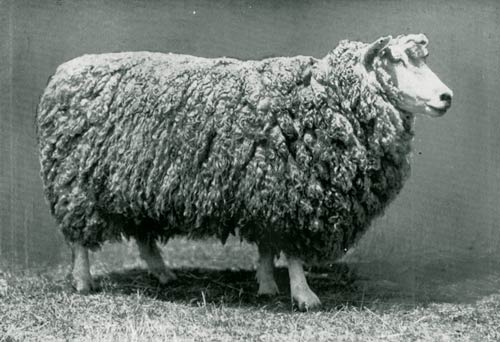
The English Leicester was one of the British sheep breeds imported to improve the Merino and replace it in some areas. This champion ewe, photographed around 1922, is a good example of the breed. English Leicesters have no wool on their faces and legs, and the rams have no horns. They were crossed with a Merino to produce sheep suitable for the frozen meat trade. Later, this cross was used to develop the Corriedale.
Te whakamahi i tēnei tūemi
Te Ara - The Encyclopedia of New Zealand
Reference:
William Perry, Sheep farming in New Zealand. Auckland: Whitcombe & Tombs, 1922, facing p. 5
This item has been provided for private study purposes (such as school projects, family and local history research) and any published reproduction (print or electronic) may infringe copyright law. It is the responsibility of the user of any material to obtain clearance from the copyright holder.







Tāpiritia te tākupu hou